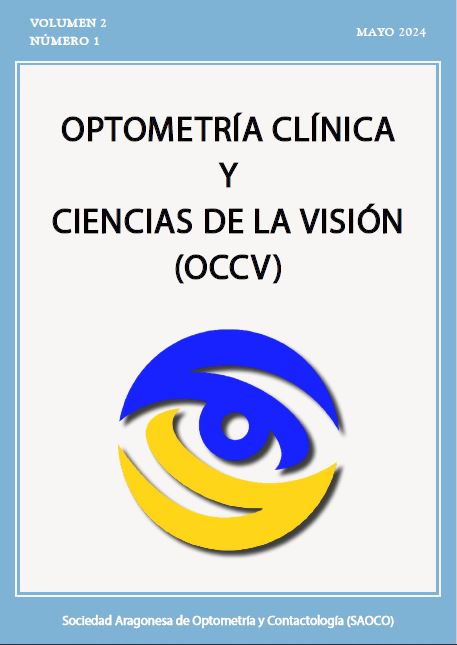Parameters of Influence on the Calculation and Evaluation of Contrast Sensitivity
Keywords:
sinusoidal networks, Repeatability, Contrast SensitivityAbstract
Relevance: The main objective of the study is to compare the Contrast Sensitivity (CS) curve obtained with three different devices in healthy patients. Two of the instruments used employ sinusoidal gratings as stimuli, while one of them uses letters as stimuli.
Purpose: This study aimed to compare the CS curve obtained with three different devices in healthy patients.
Methods: The sample consisted of 72 emmetropic or previously corrected refractive error eyes, of which 44.45% were male and 55.55% were female. The mean age of the subjects was 24.67±2.58 years. Measurement conditions were replicated for all subjects.
Results: The results indicate significant differences in CS measurements obtained using the CC-100XP® compared to measurements obtained with the OptoMeP® and Optotab®. No significant differences were found between measurements collected with the OptoMeP® and the Optotab®. All three instruments showed good repeatability.
Conclusions: The three tests provide reliable and reproducible CS measurements. Those employing sinusoidal gratings yield higher CS values than those using letters. The Topcon CC-100XP overestimates CS values compared to the other two instruments.
References
Ginsburg, A. (1983). Contrast sensitivity: relating visual capability to performance. USAF Medical Service Digest, 15-20.
Dr. Melody Huang . What is Contrast Sensitivity, vision center. Disponible en: https://www.visioncenter.org/refractive-errors/contrast-sensitivity/#div_block-60-4852
Dr Leena Vadhel, Dr Mrudula Bhave. Contrast Sensitivity; Disponible en: https://www.slideshare.net/laxmieyeinstitute/contrast-sensitivity
David I. T. Sia,Sean Martin,Gary Wittert,Robert J. Casson. Age-related change in contrast sensitivity among Australian male adults: Florey Adult Male Ageing Study. Acta Ophtalmologica, Volume 91, Issue 4.
Nio YK, Jansonius NM, Fidler V, Geraghty Enorrby S, Kooijman AC. (2000). Age-related changes of defocus-specific contrast sensitivity in healthy subjects. Ophthalmic Physiol Optics;20:323-34.
Hyvärinen L. (1999). Visual Perception in ‘Low Vision.’ Perception.;28(12):1533-1537.
Kamiya, K., Fujimura, F., Kawamorita, T., Ando, W., Iida, Y., & Shoji, N. (2021). Factors Influencing Contrast Sensitivity Function in Eyes with Mild Cataract. Journal of clinical medicine, 10(7), 1506.
Alia A. Alghwiri, Susan L. Whitney, Chapter 10 - Balance and Falls in Older Adults, Editor(s): Dale Avers, Rita A. Wong, Guccione's Geriatric Physical Therapy (Fourth Edition), Mosby, 2020, Pages 220-239.
Kukkonen, Heljä & Rovamo, Jyrki & Tiippana, Kaisa & Näsänen, Risto. (1993). Michelson contrast, RMS contrast and energy of various spatial stimuli at threshold. Vision research. 33. 1431-6.
Pelli, D. G., & Bex, P. (2013). Measuring contrast sensitivity. Vision research, 90, 10–14.
Derefeldt, G., Lennerstrand, G., & Lundh, B.L. (1979). Age variations in normal human contrast sensitivity. Acta Ophthalmologica, 57.
Karatepe, A. S., Köse, S., & Eğrilmez, S. (2017). Factors Affecting Contrast Sensitivity in Healthy Individuals: A Pilot Study. Turkish journal of ophthalmology, 47(2), 80–84.
Kay, C. D. and Morrison, J. D. (1987). A quantitative investigation into the effects of pupil diameter and defocus on contrast sensitivity for an extended range of spatial frequencies in natural and homatropinized eyes. Ophthal. Physiol. Opt. 7, 21–31.
Kamiya, K., Fujimura, F., Kawamorita, T., Ando, W., Iida, Y., & Shoji, N. (2021). Factors Influencing Contrast Sensitivity Function in Eyes with Mild Cataract. Journal of clinical medicine, 10(7), 1506.
Kara S, Gencer B, Ersan I, Arikan S, Kocabiyik O, Tufan HA, Comez A. (2016).Repeatability of contrast sensitivity testing in patients with age-related macular degeneration, glaucoma, and cataract. Arq Bras Oftalmol. 2016 Sep-Oct;79(5):323-327.
Blackwell, H. R. (1946) Contrast threshold of the human eye. J. Opt. Soc. Am. 36, 624– 643.
De Valois RL, Morgan H, Snodderly DM. (1974).Psychophysical studies of monkey vision-III. Spatial luminance contrast sensitivity tests of macaque and human observers. Vision Research. 14(1):75–81.
Wachler, B. S., & Krueger, R. R. (1998). Normalized contrast sensitivity values. Journal of refractive surgery (Thorofare, N.J. : 1995), 14(4), 463–466.
Rodríguez-Vallejo, M., Remón, L., Monsoriu, J. A., & Furlan, W. D. (2015). Designing a new test for contrast sensitivity function measurement with iPad. Journal of optometry, 8(2), 101–108.
Franco S., Silva AC., Carvalho AS., Macedo AS., Lira M.(2010). Comparison of the VCTS-6500 and the CSV-1000 tests for visual contrast sensitivity testing.
Bose, S., Piltz, J. R., & Breton, M. E. (1995). Nimodipine, a centrally active calcium antagonist, exerts a beneficial effect on contrast sensitivity in patients with normal-tension glaucoma and in control subjects. Ophthalmology, 102(8), 1236–1241.
McAnany, JJ. , Alexander, KR. (2006). Contrast sensitivity for letter optotypes vs. gratings under conditions biased toward parvocellular and magnocellular pathways, Vision Research, Volume 46, Issue 10,2006,Pages 1574-1584, ISSN 0042-6989.
Kingsnorth, A., Drew, T., Grewal, B., & Wolffsohn, J. S. (2016). Mobile app Aston contrast sensitivity test. Clinical & experimental optometry, 99(4), 350–355.
Pelli, D.G., Robson J.G. (1990). Letter to the editor. Are letters better tan gratings?. Clin. Vision Sci. Vol. 6, No.5,pp. 409--411, 199.
Mäntyjärvi, M., & Laitinen, T. (2001). Normal values for the Pelli-Robson contrast sensitivity test. Journal of cataract and refractive surgery, 27(2), 261–266.
Tahkor, A., Heravian Shandiz, J., Azimi Khorasani, A., & Ansari Moghadam, A. (2021). Comparison of CSV-1000 and Metrovision contrast sensitivity tests in normal eyes. Medical Hypothesis, Discovery & Innovation in Optometry.
Additional Files
Published
Issue
Section
Categories
License
Copyright (c) 2024 Clinical Optometry and Vision Science Journal

This work is licensed under a Creative Commons Attribution-NonCommercial 4.0 International License.



